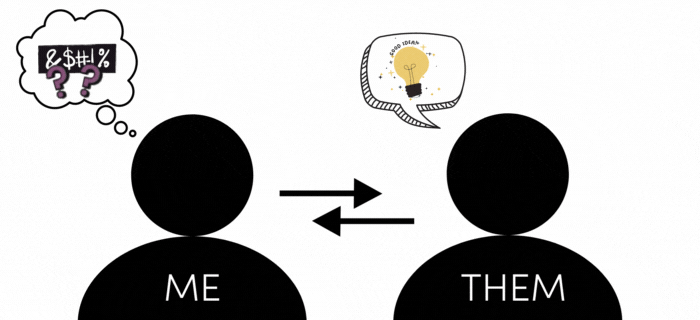#====================================================#
# Library Load-in-------------------------------------
from plotnine import *
import pandas as pd
# Image Options---------------------------------------
#Set the color
orange_hex = "#FFBB58"
#Set the width
chonk = 10
# Data Creation----------------------------------------
line = pd.DataFrame({"x" : list(range(0,5)),
"y" : 1,
"color" : orange_hex,
"size" : chonk})
# Plot Creation----------------------------------------
orange_line = (ggplot(line, aes("x", "y"))+
geom_path(color = line.loc[:,"color"],
size = line.loc[:,"size"])+
coord_equal(ylim = (0,3), xlim = (0,4)))
#View the plot
print(orange_line)It’s All About Perspective
Making A Case for Generative Art
Posit::conf(2023)
September 20th, 2023 | 2023-09-20
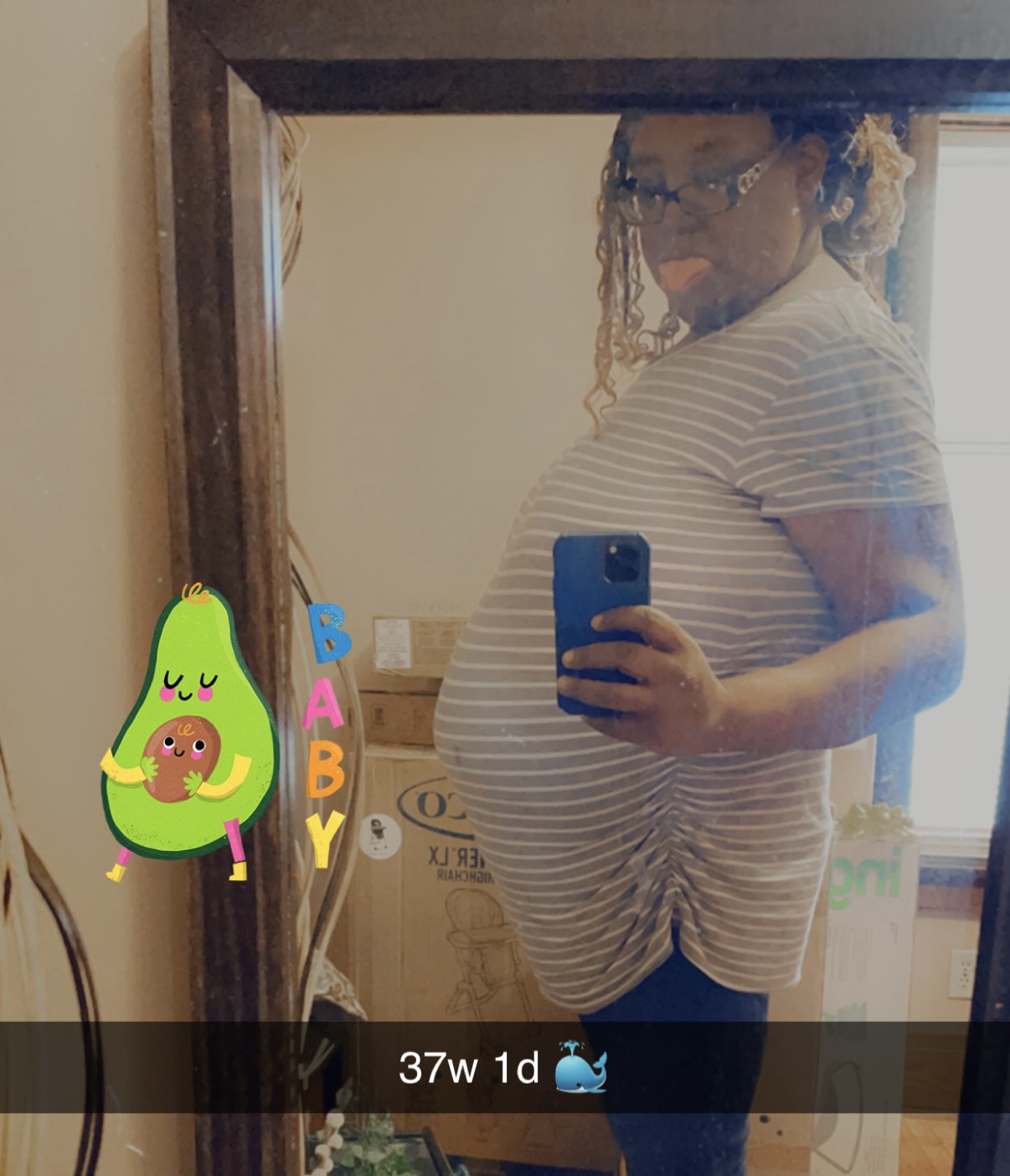
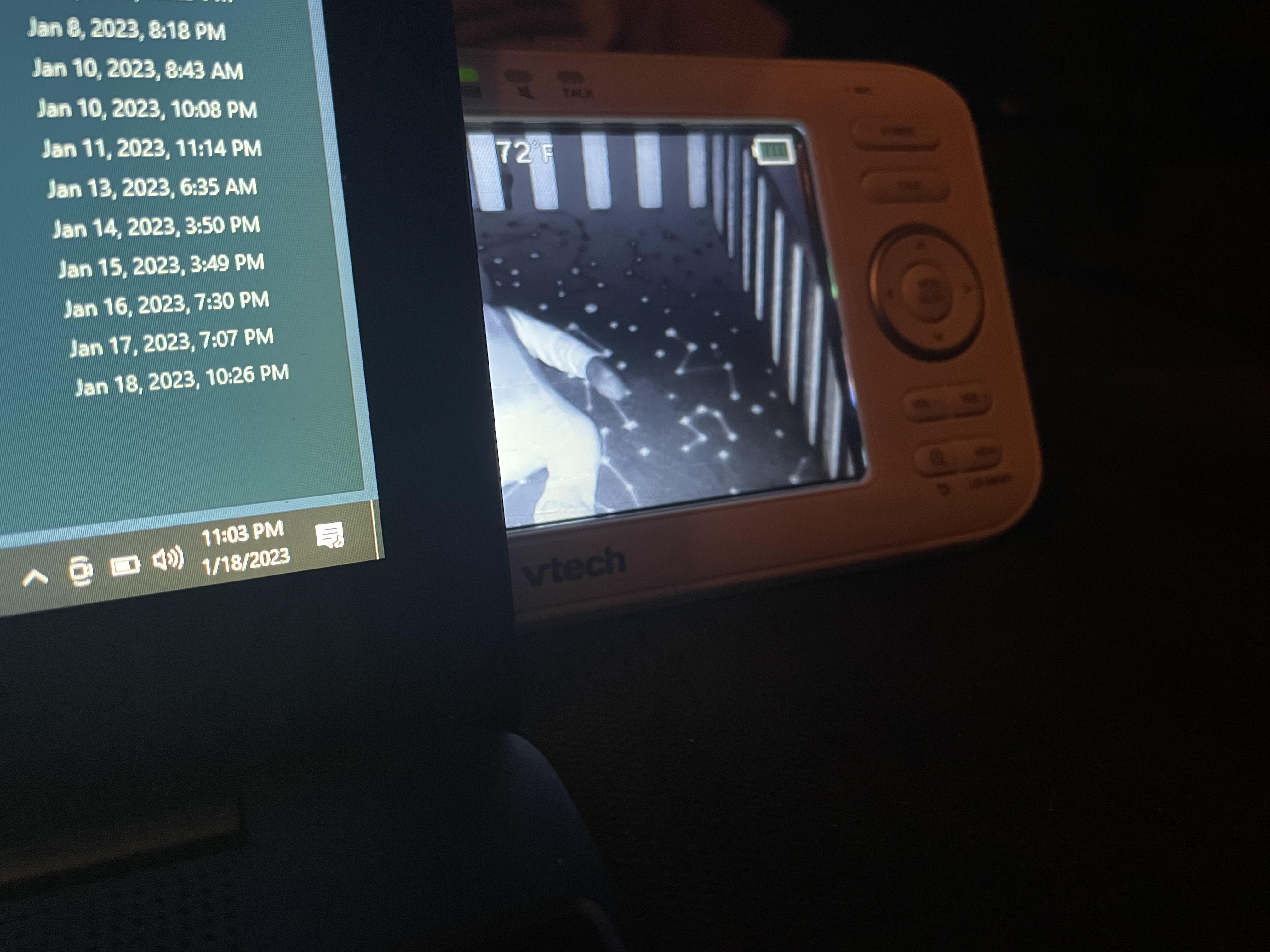

Disclaimer

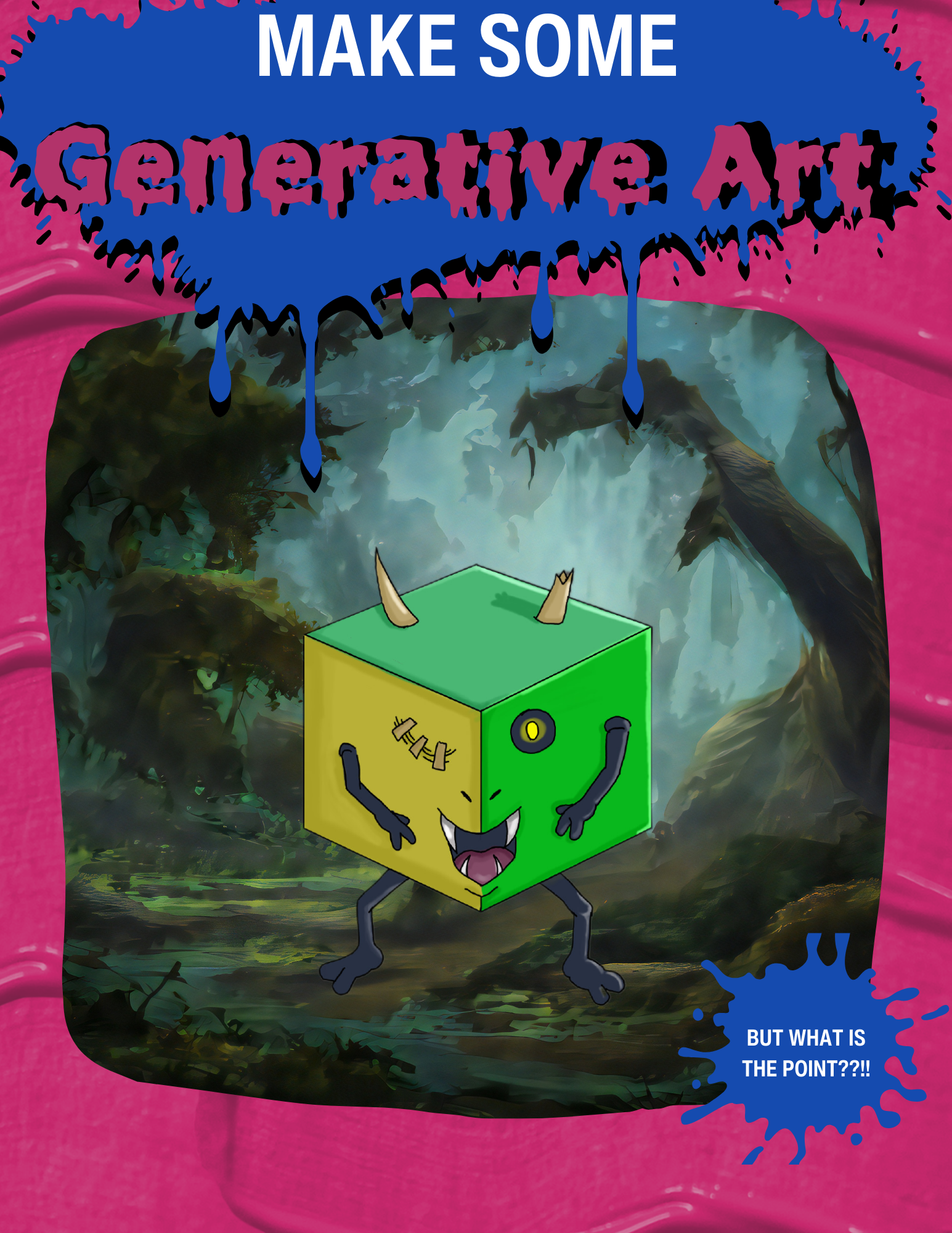
@KazeKomboArt


@KazeKomboArt

@KazeKomboArt
What are we Talking About Today?
What is Generative Art?
What are we Talking About Today?
What is Generative Art?
How Can we Make Generative Art in R or Python?
What are we Talking About Today?
What is Generative Art?
How Can we Make Generative Art in R or Python?
Benefits of Creating Generative Art
What are we Talking About Today?
What is Generative Art?
How Can we Make Generative Art in R or Python?
Benefits of Creating Generative Art
What is Data Science?
What are we Talking About Today?
What is Generative Art?
How Can we Make Generative Art in R or Python?
Benefits of Creating Generative Art
What is Data Science?
Examples of How Generative Art Translates into Data Science
What are we Talking About Today?
What is Generative Art?
How Can we Make Generative Art in R or Python?
Benefits of Creating Generative Art
What is Data Science?
Examples of How Generative Art Translates into Data Science
Final Thoughts
What is Generative Art?
What is Generative Art?
In this room today, Generative Art is defined as:
Artwork created through a program in any language or interface.
As long as a program executes the generation of the art…
…it can be considered generative art.
What is Generative Art?
While all AI Art is generative art…
…All generative art IS NOT AI art
&
While some generative art is randomly calculated by the computer…
…Some generative art is intentional and deliberately calculated by a human
How Can we Make Generative Art
in R or Python?
How Can we Make Generative Art in R or Python?
Making generative art might not be as hard as you think…
You just need ✨data✨ and to
Think outside the grid 📊 of your favorite graphical software/package
How Can we Make Generative Art in R or Python?
Some “Primitive” Graphical Tools🛠

How Can we Make Generative Art in R or Python?
“I don’t understand how you get the data to put into [ insert your graphical tool of choice here ]”

How Can we Make Generative Art in R or Python?
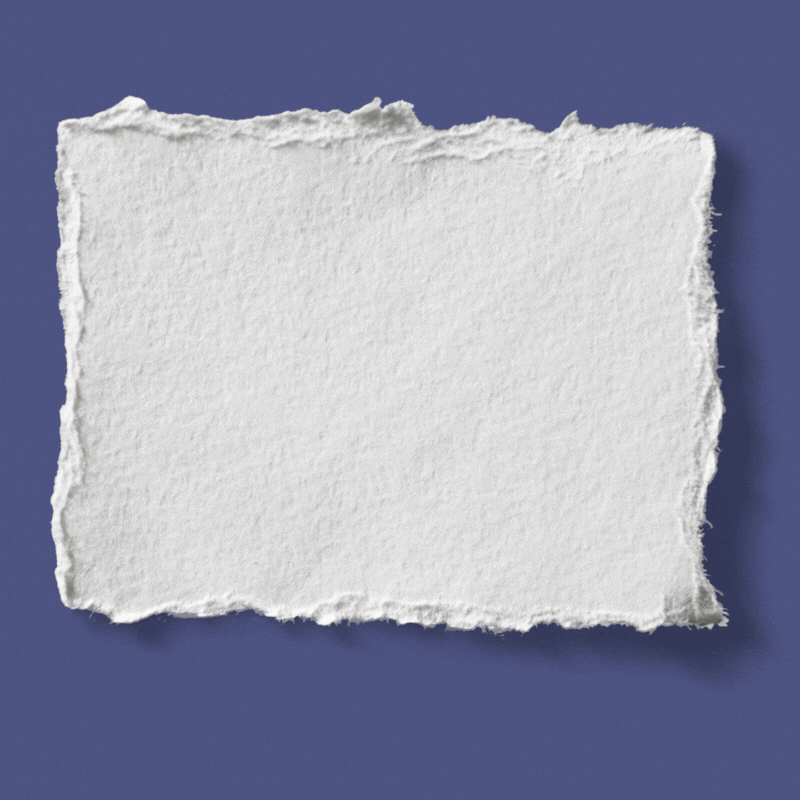
How Can we Make Generative Art in R or Python?
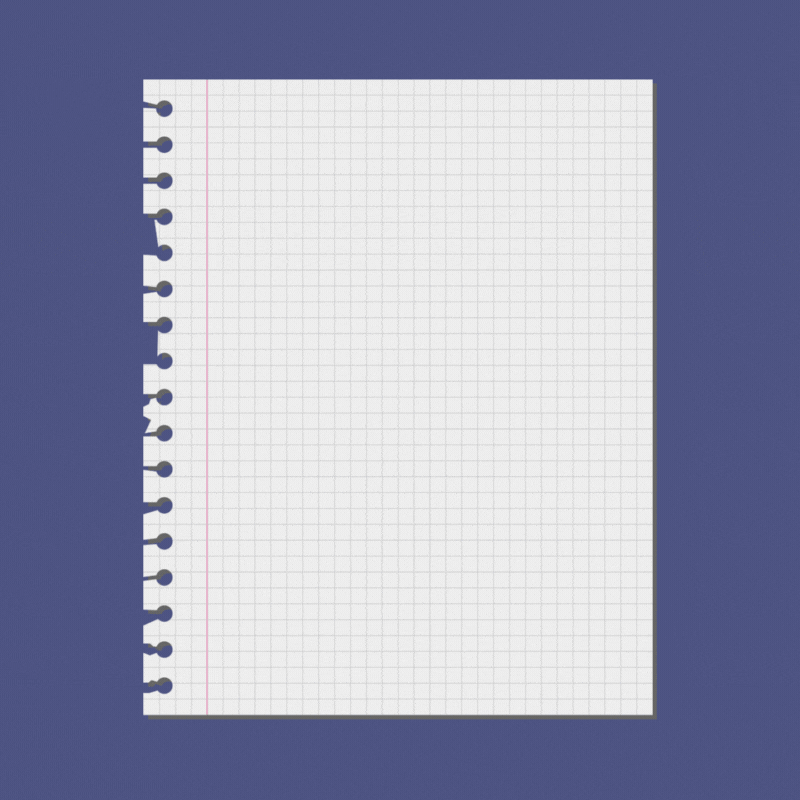
How Can we Make Generative Art in R or Python?
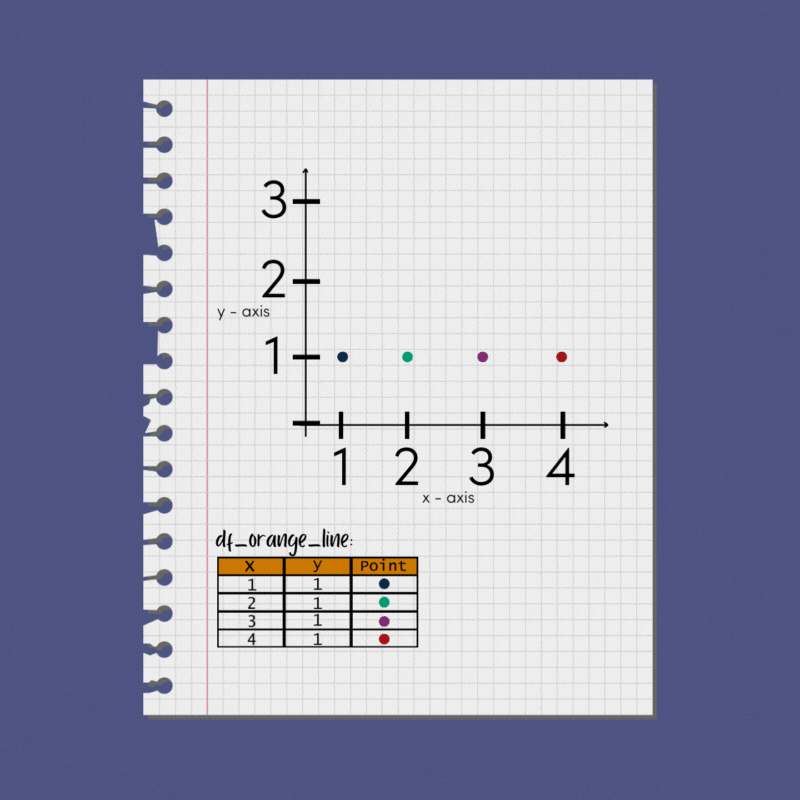
How Can we Make Generative Art in R or Python?
A Simple Example (In Python)
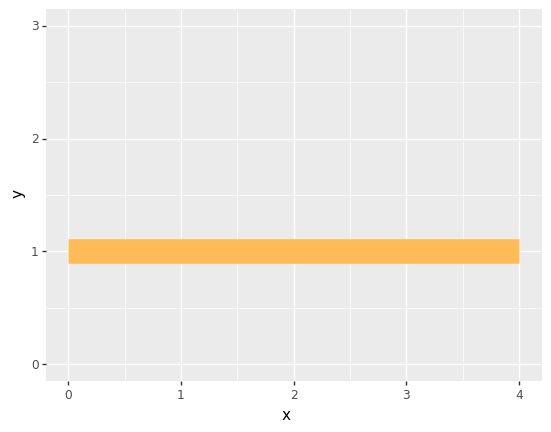
How Can we Make Generative Art in R or Python?
A Simple Example (In Python)
#====================================================#
# Library Load-in-------------------------------------
from plotnine import *
import pandas as pd
# Image Options---------------------------------------
#Set the color
orange_hex = "#FFBB58"
#Set the width
chonk = 10
# Data Creation----------------------------------------
line = pd.DataFrame({"x" : list(range(0,5)),
"y" : 1,
"color" : orange_hex,
"size" : chonk})
# Plot Creation----------------------------------------
orange_line = (ggplot(line, aes("x", "y"))+
geom_path(color = line.loc[:,"color"],
size = line.loc[:,"size"])+
coord_equal(ylim = (0,3), xlim = (0,4)))
#View the plot
print(orange_line)
How Can we Make Generative Art in R or Python?
A Simple Example (In Python)
#====================================================#
# Library Load-in-------------------------------------
from plotnine import *
import pandas as pd
# Image Options---------------------------------------
#Set the color
orange_hex = "#FFBB58"
#Set the width
chonk = 10
# Data Creation----------------------------------------
line = pd.DataFrame({"x" : list(range(0,5)),
"y" : 1,
"color" : orange_hex,
"size" : chonk})
# Plot Creation----------------------------------------
orange_line = (ggplot(line, aes("x", "y"))+
geom_path(color = line.loc[:,"color"],
size = line.loc[:,"size"])+
coord_equal(ylim = (0,3), xlim = (0,4)))
#View the plot
print(orange_line)
How Can we Make Generative Art in R or Python?
A Simple Example (In Python)
#====================================================#
# Library Load-in-------------------------------------
from plotnine import *
import pandas as pd
# Image Options---------------------------------------
#Set the color
orange_hex = "#FFBB58"
#Set the width
chonk = 10
# Data Creation----------------------------------------
line = pd.DataFrame({"x" : list(range(0,5)),
"y" : 1,
"color" : orange_hex,
"size" : chonk})
# Plot Creation----------------------------------------
orange_line = (ggplot(line, aes("x", "y"))+
geom_path(color = line.loc[:,"color"],
size = line.loc[:,"size"])+
coord_equal(ylim = (0,3), xlim = (0,4)))
#View the plot
print(orange_line)
How Can we Make Generative Art in R or Python?
A More Complicated Example (In R)
# Library Load-ins---------------------------------
library(ggplot2); library(dplyr); library(artpack)
# Let's make: a "cityscape" with a sky, moon, and buildings
# Data for the sky---------------------
df_sky <-
tibble(x = 0,
xend = 4,
y = seq(0,3, length = 100),
yend = y,
color = art_pals("sunnyside", 100),
linewidth = 10
)
# Plot Creation-----------------------
df_sky |>
ggplot(aes(x, y, xend = xend, yend = yend)) +
theme_void() +
coord_cartesian(expand = FALSE,
xlim = c(0,4),
ylim = c(0,3)) +
geom_segment(color = df_sky$color,
linewidth = df_sky$linewidth)
#...
How Can we Make Generative Art in R or Python?
A More Complicated Example (In R)
# Data for the moon----------------------------------------------
df_moon <- tibble(
x = 2,
y = 1.5,
size = 100,
fill = "#f0e4bb",
color = "#000000"
)
# Plot Creation--------------------------------------------------
df_sky |>
ggplot(aes(x,y, xend = xend, yend = yend)) +
theme_void() +
coord_cartesian(xlim = c(0,4), ylim = c(0,3),
expand = FALSE) +
geom_segment(color = df_sky$color,
linewidth = df_sky$linewidth) +
geom_point(data = df_moon, aes(x,y),
color = df_moon$color,
fill = df_moon$fill,
size = df_moon$size,
shape = 21,
stroke = .5,
inherit.aes = FALSE)
#...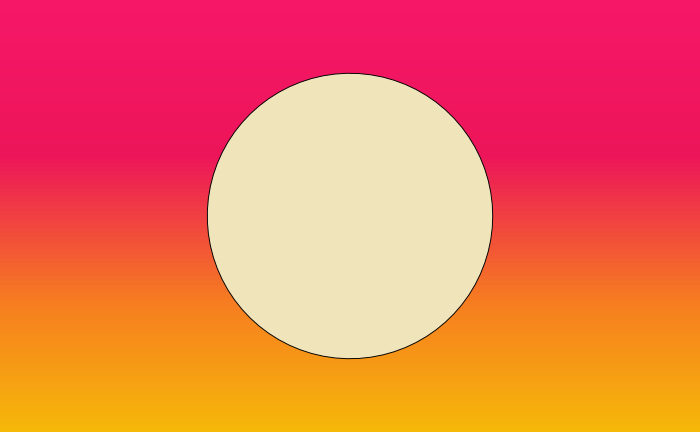
How Can we Make Generative Art in R or Python?
A More Complicated Example (In R)
# Data for the buildings--------------------------------
df_buildings <- tibble(
x = 0:4,
xend = x,
y = 0,
yend = sample(seq(.5,2, l = 10), 5, replace = TRUE),
color = "#000000",linewidth = 60
)
# Plot Creation------------------------------------------
df_sky |>
ggplot(aes(x,y, xend = xend, yend = yend)) +
theme_void() +
coord_cartesian(xlim = c(0,4), ylim = c(0,3),
expand = FALSE) +
geom_segment(color = df_sky$color,
linewidth = df_sky$linewidth) +
geom_point(data = df_moon, aes(x,y),
color = df_moon$color,
fill = df_moon$fill,
size = df_moon$size,
shape = 21,
stroke = .5,
inherit.aes = FALSE) +
geom_segment(data = df_buildings,
color = df_buildings$color,
linewidth = df_buildings$linewidth)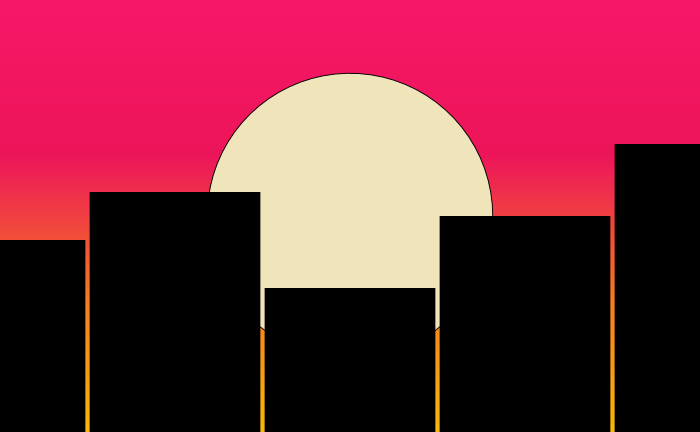
How Can we Make Generative Art in R or Python?
The concept of translating data into visuals is the same no matter how simple or complex a piece is…
The hard part is usually the programming or the math🤢
Benefits of Creating
Generative Art
Benefits of Creating Generative Art

People may learn better when they are doing something they enjoy 🤯
If you enjoy creating art…you might learn some things 🤔
Benefits of Creating Generative Art
The Obvious 🎨
- Improved Data Visualization Skills
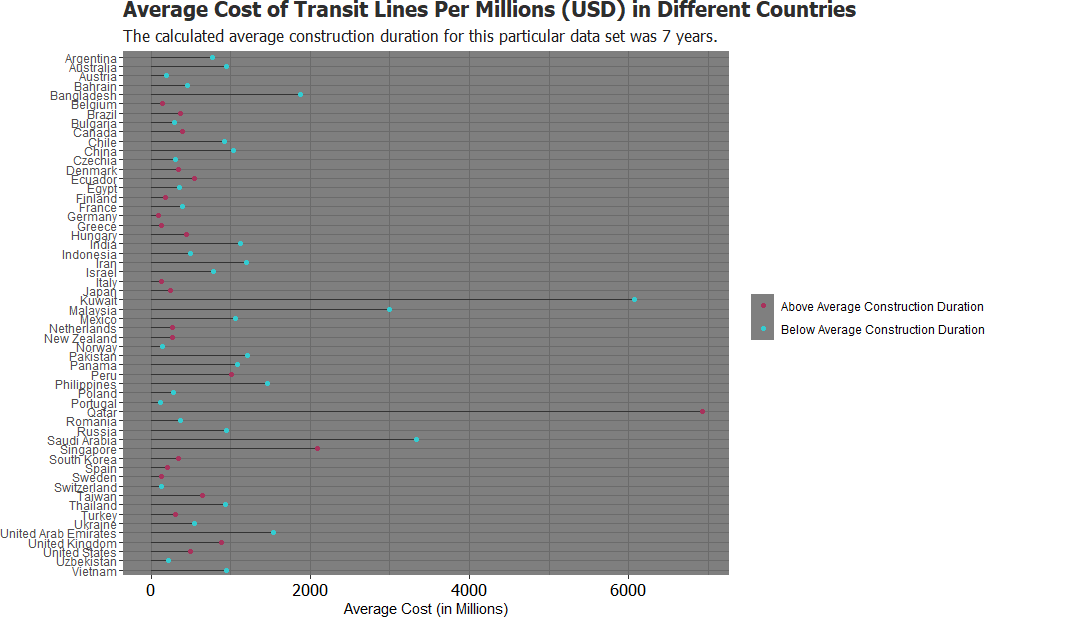
Benefits of Creating Generative Art
The Obvious 🎨
- Improved Data Visualization Skills
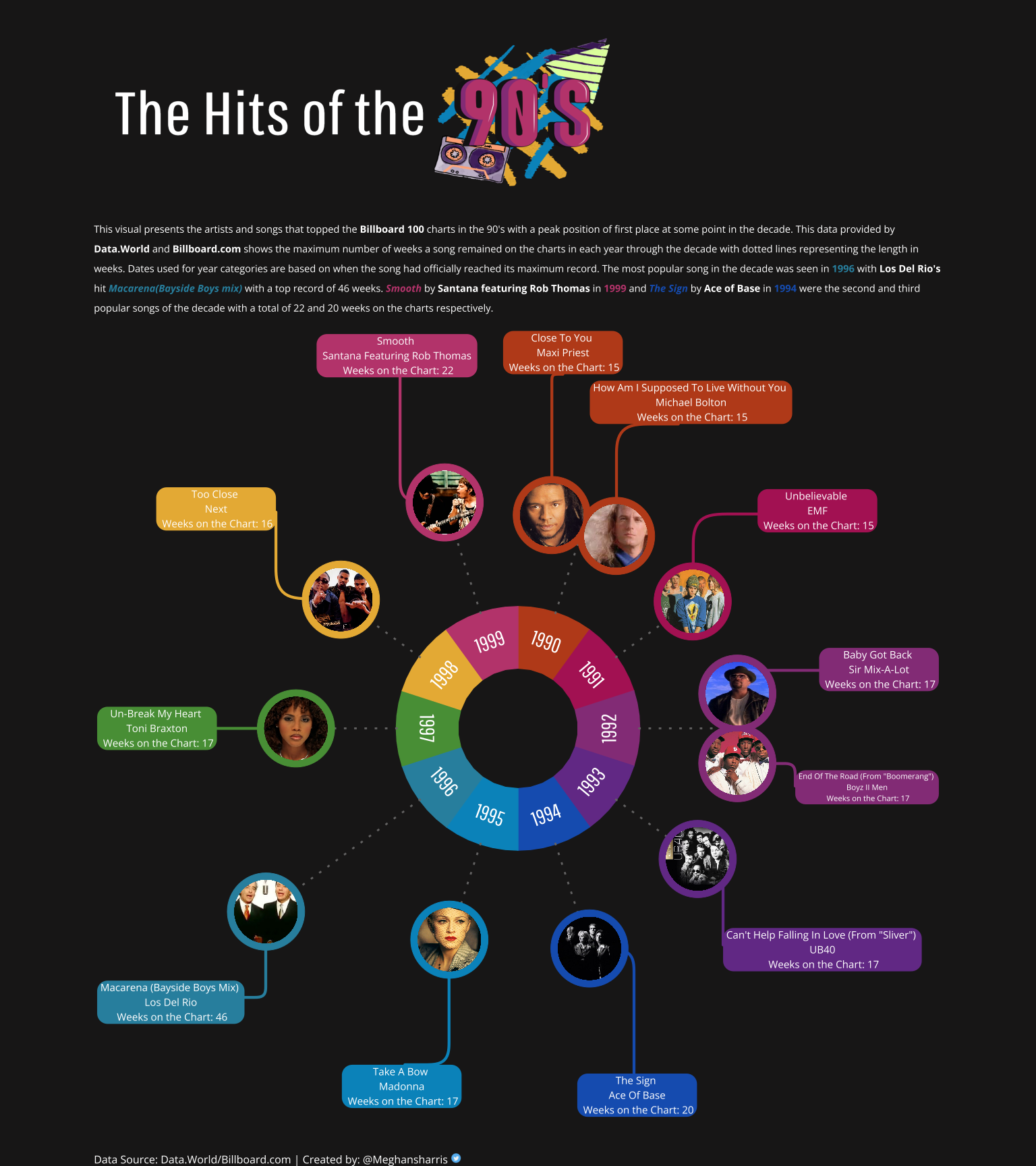
Benefits of Creating Generative Art
The Obvious 🎨
- Improved Data Visualization Skills

Benefits of Creating Generative Art
The Abstract 🧠
- Mathematical/Logical Reasoning
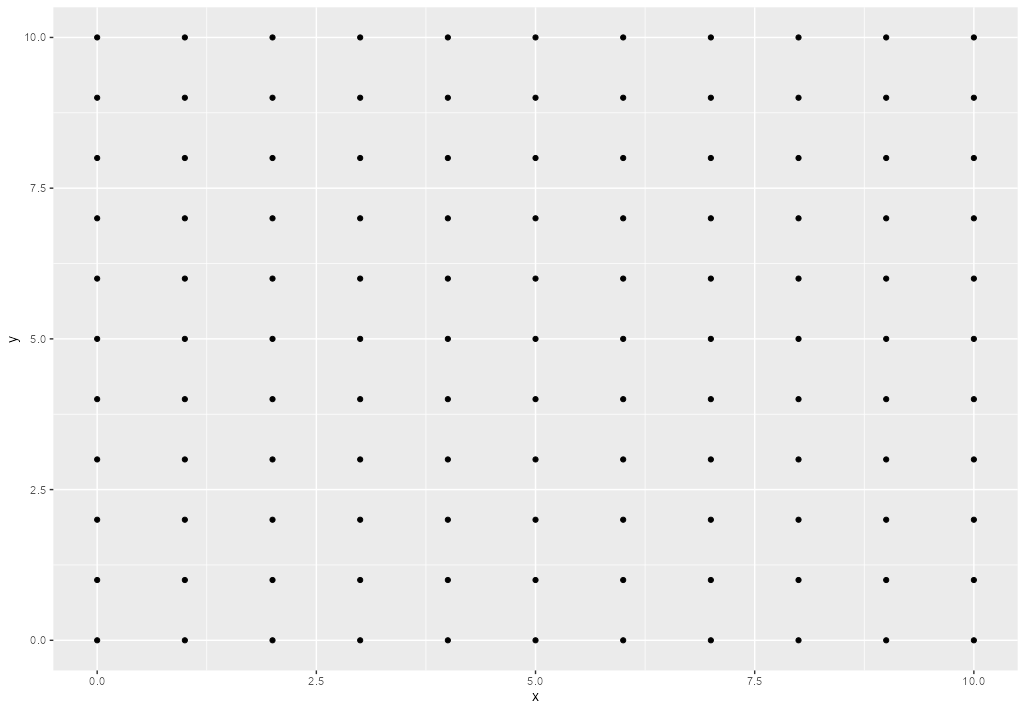
Benefits of Creating Generative Art
The Abstract 🧠
- Mathematical/Logical Reasoning
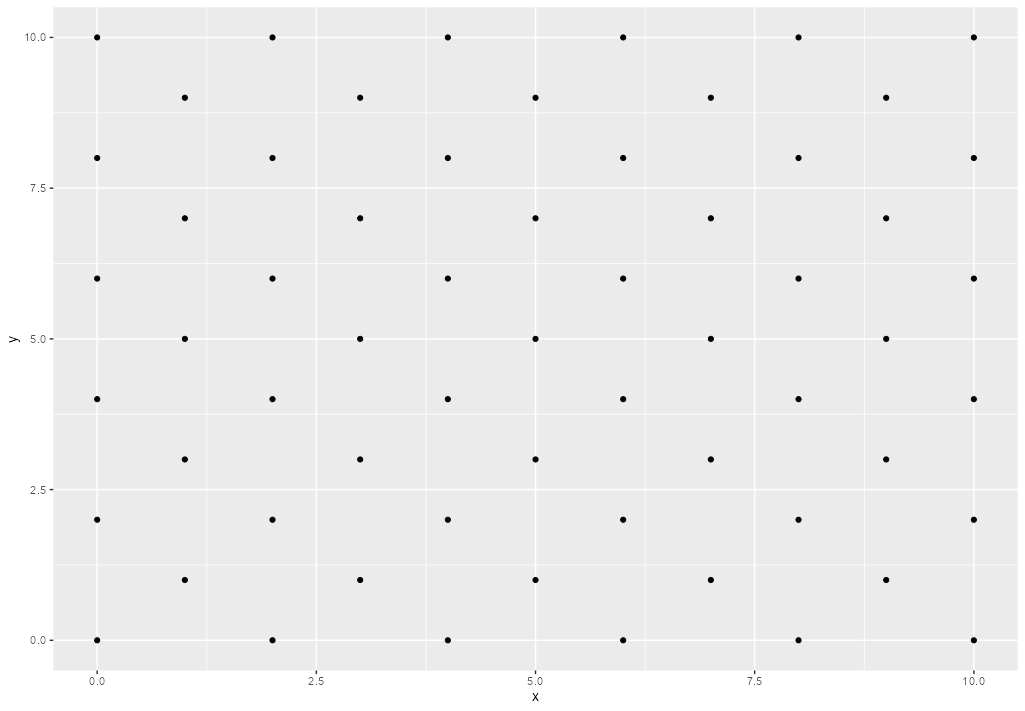
Benefits of Creating Generative Art
The Abstract 🧠
- Mathematical/Logical Reasoning

Benefits of Creating Generative Art
The Unexpected 😲
- The Community
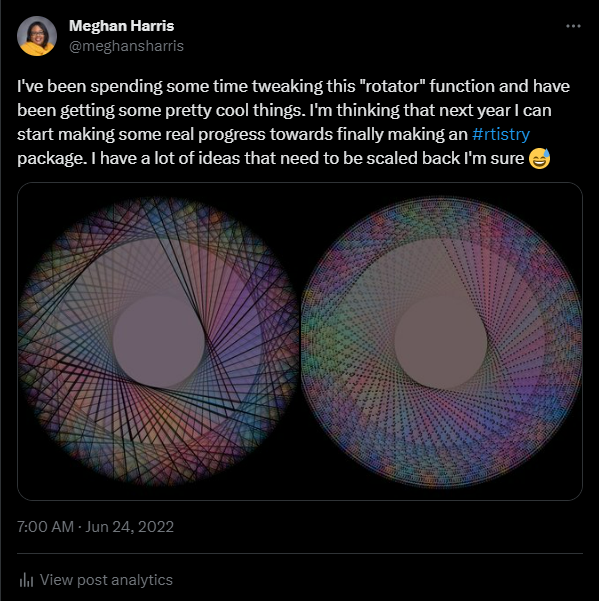
Benefits of Creating Generative Art
The Unexpected 😲
- Package Development - {artpack}
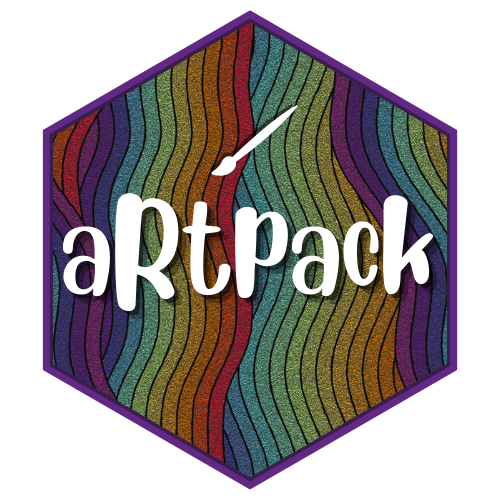
- My first ever package!
- Data-centric Rtistry Toolkit
- Early development, but things are coming
- Now available on CRAN 🎉
What is Data Science?
What is Data Science?
In this room today, Data Science is defined as…
A field that uses statistics, computing, methods, and processes to extract or derive knowledge and insights from data.
We’ll focus on the technical methods and processes (coding) for the remainder of this talk…
Examples of How Generative Art Translates into Data Science
Examples of How Generative Art Translates into Data Science
Iteration♻️
- Mastering this in Art and Data Science can be a HUGE feat
- Important concept in both art and Data Science.
- A lot of scenarios in both fields, where we’d want to do the same thing over and over.

Examples of How Generative Art Translates into Data Science - Iteration♻️
Task:
- Want to create a lot of copies of a shape
- Each shape has a different color, size, and position on the coordinate system
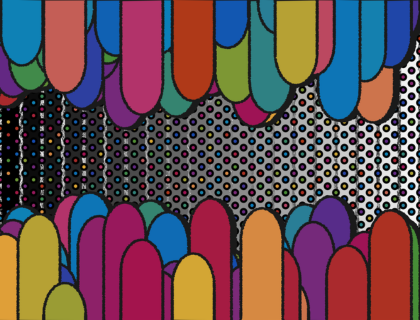
Task:
- Want to summarize, label, and save multiple processed data sets all at once
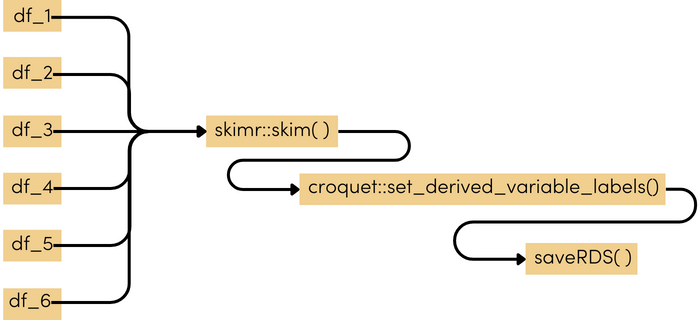
Examples of How Generative Art Translates into Data Science - Iteration♻️
Approach:
- Isolate the problem….
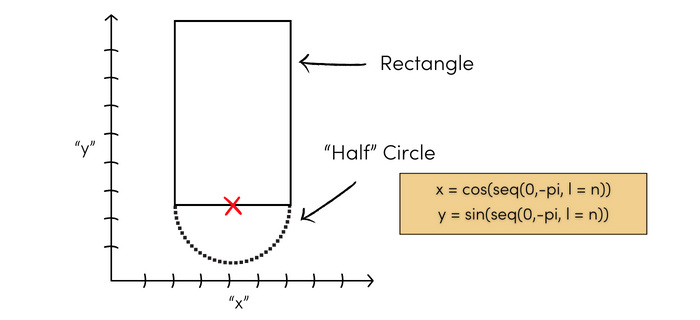
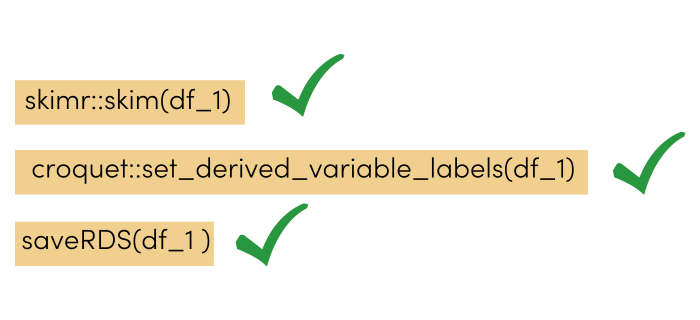
Examples of How Generative Art Translates into Data Science - Iteration♻️
Solution:
- Use your preferred method of iteration to create a generalized workflow.
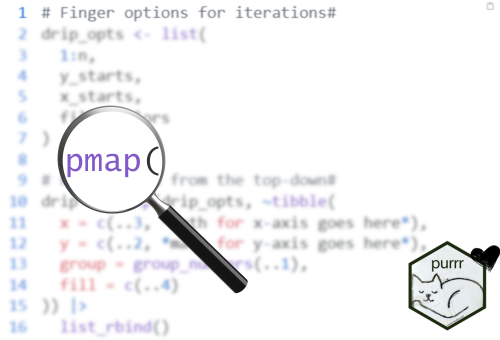
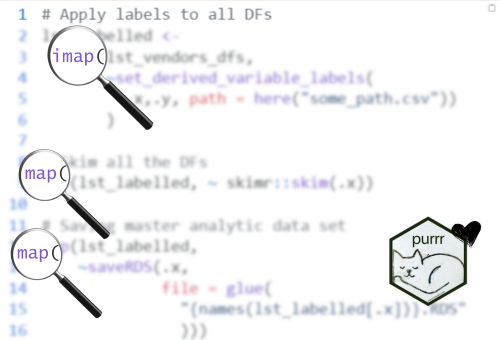
Examples of How Generative Art Translates into Data Science
Development 📦
- Learning and honing in on development skills can take you to new levels✨.
- In Generative Art, this promotes cleaner and robust workflows and more complex operations
- In Data Science, it does the same, but it’s invaluable
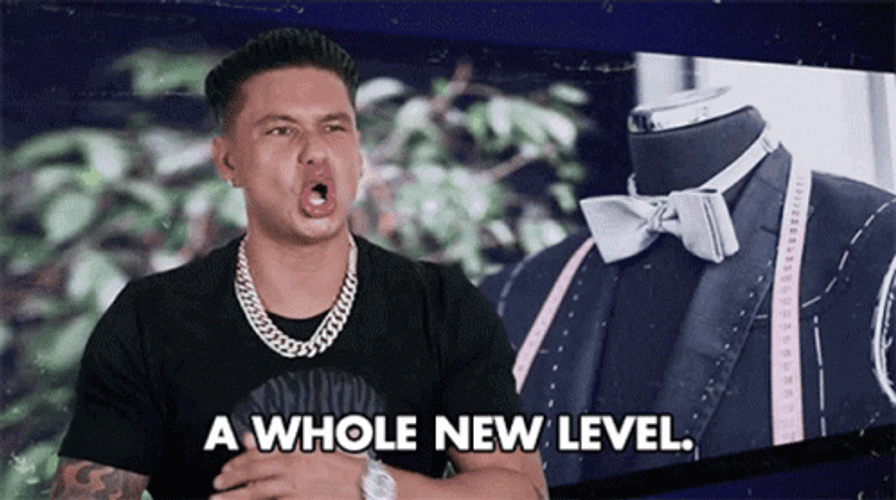
Examples of How Generative Art Translates into Data Science - Development 📦
Task:
- Create a function that spits out a color palette based on input choices.
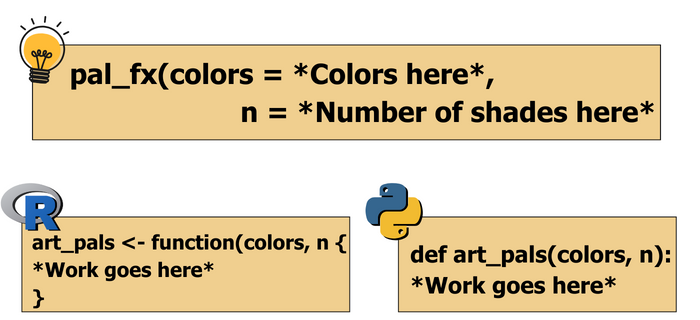
Task:
- Want to create a function that left joins a table of existing data to another data frame.

Examples of How Generative Art Translates into Data Science - Development 📦
Approach:
- Isolate: How do we handle the input?, how is it moving through the function? What is coming out?
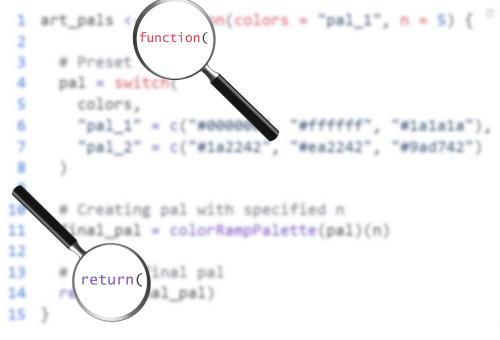
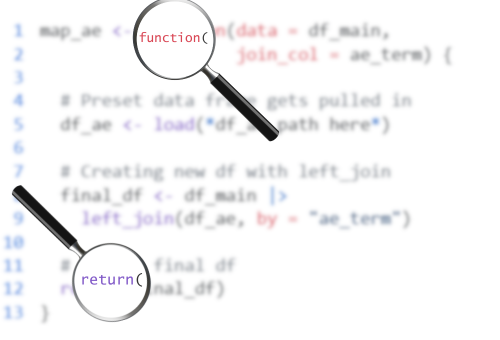
Examples of How Generative Art Translates into Data Science - Development 📦
Solution:
- Use your (hopefully) working function and reduce code bloat
Examples of How Generative Art Translates into Data Science
Communication 💬
- It’s debatable if you need communication for art
- In Data Science, you NEED to communicate or else 💀

Examples of How Generative Art Translates into Data Science - Communication 💬
Task:
- Need help developing unit test suites for art functions…
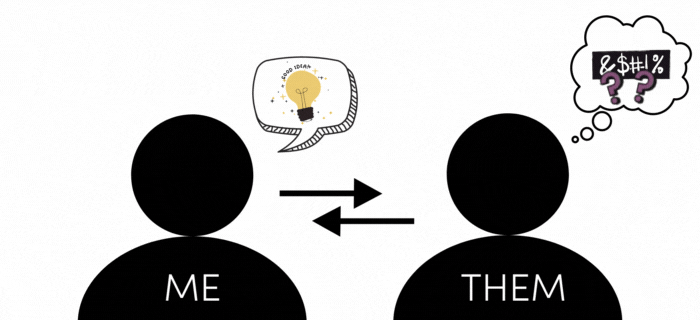
Task:
Need to perform a data request for a stakeholder…
![]()
Examples of How Generative Art Translates into Data Science - Communication 💬
Approach:
- Identify what matters…
“What I am functionally trying to do without the context of the art?”
“What external context or details about the data am I missing?”
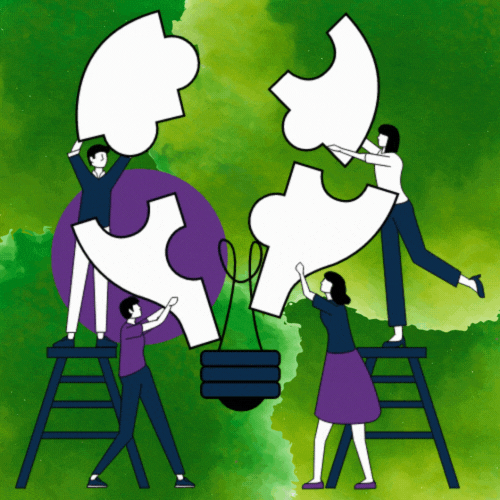
Examples of How Generative Art Translates into Data Science - Communication 💬
Solution:
- Take the right course of action to get the desired result…

Final Thoughts
Final Thoughts
This was a tiny introduction into the concept of one type of generative art
This was personal: Generative Art was MY motivation to learn and do more
Doing something I loved made programming/data science digestible


